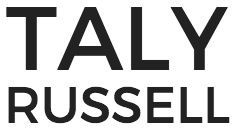While discussing workplace diversity there tends to be a focus on ensuring that there are different ethnicities and both genders are represented, however, age diversity is often overlooked. There are many benefits when companies can increase age diversity. Having older employees can add more values, knowledge, and perspective to any organization.
While young people often fall back on their academic skills older employees are more likely to fall back on experience. This is an example of a generational difference. When a company has a diversified workforce they also have an improved ability to handle tasks and solve problems. By employing people of different ages the workplace can gain more skill-sets and in turn, increase productivity. When first beginning to increase age diversity the one disadvantage may be figuring out different work and communication styles.
All companies benefit from diversity, of all types. The more voices there are, the more there can be innovation and collaboration. Older and younger generations often have differing opinions on certain subjects which can lead to important conversations, fresh perspectives, and great solutions. The differences in style, opinions, and expectations can be a strength when managed correctly.
Furthermore, age diversity can help to reduce employee turnover. Older workers are reportedly more loyal and typically stay in their jobs much longer than younger employees. This means that employers can keep skilled, experienced workers while also lowering their turnover costs.

